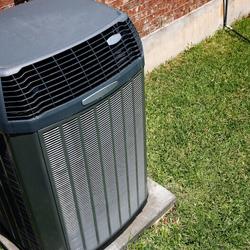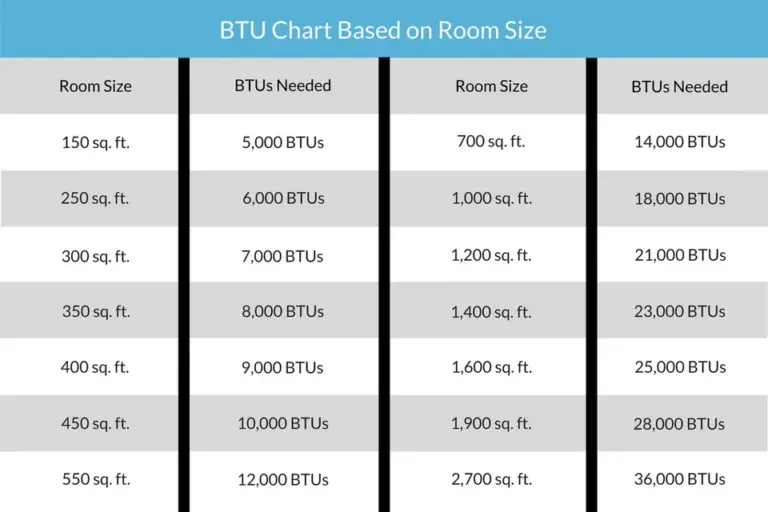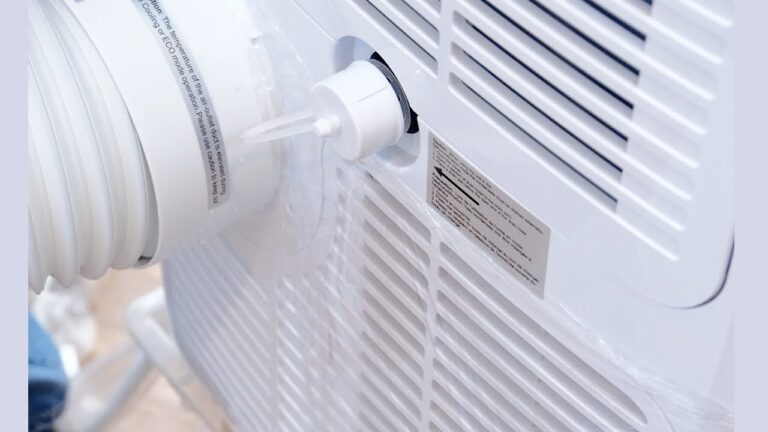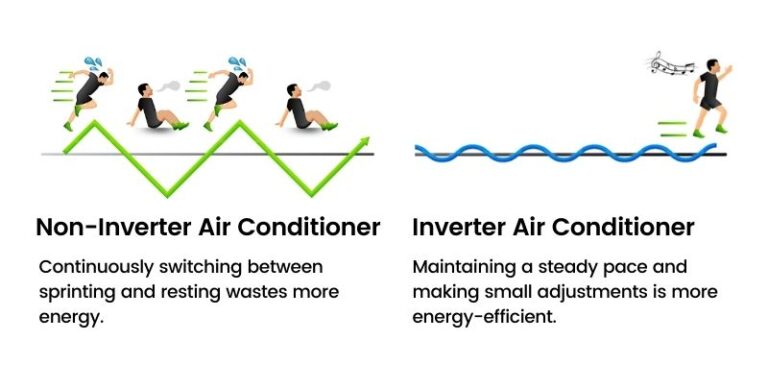How Much Space Should I Leave Around My Air Conditioner: Essential Tips
Leave at least 24 inches of space around your air conditioner. This ensures optimal performance and airflow.
Proper spacing around your air conditioner is crucial for efficient operation. Adequate clearance allows for unrestricted airflow, preventing the unit from overheating and improving its longevity. A well-ventilated unit runs more efficiently, reducing energy consumption and lowering utility bills. Regular maintenance and proper spacing can save you from costly repairs.
Always check the manufacturer’s guidelines for specific spacing requirements. By ensuring 24 inches of clearance, you promote better performance and increase the lifespan of your air conditioner. This simple step helps maintain a comfortable indoor environment while maximizing energy efficiency. Keep the area around your unit free from obstructions for optimal results.

Credit: www.premiersystemsmt.com
Importance Of Proper Clearance
Having the proper clearance around your air conditioner is crucial. It impacts both the efficiency and lifespan of your unit. Let’s dive into why proper clearance is so important.
Improved Efficiency
Air conditioners need space to work efficiently. Obstructions can block airflow, causing the unit to work harder. This leads to higher energy bills and less cooling power. Ensure there is at least 24 inches of space around your unit.
Proper clearance allows for better heat exchange. This makes your air conditioner run more smoothly. It also helps to keep your home cool.
Prolonged Lifespan
When your air conditioner has enough space, it faces less strain. This can significantly prolong its lifespan. Units with blocked airflow often overheat and break down faster.
Maintain a clear area around your air conditioner. This practice can save you money on repairs and replacements. A well-maintained unit can last several years longer.
| Clearance Area | Recommended Space |
|---|---|
| All Sides | 24 inches |
| Top | 60 inches |
Keep plants, furniture, and other objects away from your air conditioner. This will ensure it runs efficiently and lasts longer.

Credit: www.moncriefair.com
Manufacturer Recommendations
Knowing how much space to leave around your air conditioner is crucial. Manufacturers provide specific guidelines to ensure optimal performance. Following these recommendations can enhance the efficiency and lifespan of your unit.
Consulting The Manual
Always refer to the user manual provided by the manufacturer. The manual contains detailed information about the required clearance. This information helps in maintaining proper airflow and avoiding overheating.
Most manuals specify the minimum distance for all sides of the air conditioner. Keep the manual handy for accurate measurements and guidelines.
Universal Guidelines
While manufacturers have specific guidelines, there are some universal rules you can follow. These apply to most air conditioning units to ensure efficiency and safety.
- Leave at least 12-24 inches of space around the unit.
- Ensure there are no obstructions like plants or furniture.
- Check that the top of the unit has 60 inches of clearance.
These general rules help maintain good airflow and prevent overheating. Always cross-check with your specific model’s manual.
| Component | Minimum Clearance |
|---|---|
| Sides | 12-24 inches |
| Top | 60 inches |
Ideal Clearance For Outdoor Units
Proper clearance around your air conditioner is crucial. It ensures efficient operation and longevity. This guide explains the ideal space needed for your outdoor unit.
Side Clearance
Your air conditioner needs room on all sides. Maintain at least 24 inches of clearance on each side. This space allows for proper air circulation. It also helps in easy maintenance and repair.
- Left Side: 24 inches
- Right Side: 24 inches
- Back Side: 24 inches
- Front Side: 24 inches (for service access)
Top Clearance
The top of your air conditioner also needs space. Ensure at least 60 inches of clearance above the unit. This helps in proper heat dissipation. It prevents overheating and improves efficiency.
| Clearance Requirement | Measurement |
|---|---|
| Side Clearance | 24 inches |
| Top Clearance | 60 inches |
By following these clearance guidelines, you ensure optimal performance. Your air conditioner will run efficiently and last longer.
Impact Of Obstructions
Obstructions around your air conditioner can create several issues. These issues can affect the unit’s efficiency and lifespan. Understanding the impact of obstructions helps maintain your system’s performance.
Airflow Restrictions
Proper airflow is crucial for an air conditioner’s efficiency. Any blockage can reduce its ability to cool your home.
Leaves, plants, and debris can block the airflow. This leads to the system working harder, using more energy. It also increases wear and tear on the components.
Furniture and large objects placed near the unit can also restrict airflow. Ensure there is at least two to three feet of clearance around the unit.
| Obstruction Type | Effect on Airflow |
|---|---|
| Leaves and Debris | Blocks air intake, reduces efficiency |
| Plants | Hinders airflow, causes overworking |
| Furniture | Impedes air circulation |
Potential Damage
Obstructions can cause significant damage to your air conditioner. The system may overheat, leading to potential breakdowns.
Clogged filters from debris can reduce the unit’s lifespan. Regular cleaning and maintenance can prevent this.
Blocked vents can cause the system to freeze up. This may result in costly repairs.
- Keep the area around the unit clear of debris.
- Trim plants and bushes regularly.
- Ensure furniture is placed away from the unit.
By maintaining a clear space around your air conditioner, you ensure optimal performance. This practice extends the unit’s lifespan and reduces energy costs.
Landscaping Around The Unit
Proper landscaping around your air conditioner can improve efficiency. It also enhances the appearance of your outdoor space. Knowing how to position plants and keep the area clean is crucial.
Plant Placement
Place plants at least 2-3 feet away from the air conditioner. This ensures proper airflow and reduces strain on the unit. Use small shrubs or bushes that don’t grow too tall. Tall plants can block airflow and make the unit work harder.
Consider using a gravel border around the unit. Gravel prevents soil erosion and keeps the area clean. It also helps in reducing weed growth near the air conditioner.
Avoiding Debris
Keep the area around the unit free from leaves and grass clippings. Debris can clog the air conditioner and reduce its efficiency. Trim trees and bushes regularly to avoid falling leaves.
Use a mesh cover to protect the unit from debris. Mesh covers allow airflow while keeping out leaves and dirt. Ensure the cover does not block the vents.
| Task | Frequency |
|---|---|
| Trim Plants | Monthly |
| Clear Debris | Weekly |
| Check Airflow | Bi-weekly |
Seasonal Considerations
Ensuring the right amount of space around your air conditioner is crucial. Different seasons require different preparations and maintenance tasks. Keeping your AC unit free from obstructions ensures efficiency and longevity.
Winter Preparations
During winter, you need to protect your air conditioner. Snow and ice can cause damage.
- Clear snow around the unit regularly.
- Install a cover to shield the AC from snow and ice.
- Trim nearby trees to prevent branches from falling on the unit.
Summer Maintenance
In summer, your air conditioner works harder. Make sure it has plenty of space.
| Task | Description |
|---|---|
| Clear Debris | Remove leaves, dirt, and grass clippings. |
| Check Clearance | Ensure at least 24 inches of space around the unit. |
| Clean the Coils | Ensure the coils are free from dust and debris. |
Regular maintenance and seasonal preparation will keep your air conditioner running smoothly. A well-maintained unit saves energy and reduces repair costs.
Urban Vs. Suburban Installations
Installing an air conditioner requires careful planning. This is especially true in urban and suburban areas. The amount of space you leave around your air conditioner impacts its performance. It also affects noise levels and accessibility for maintenance. Let’s explore the key differences between urban and suburban installations.
Space Constraints
Urban areas often have limited space. Buildings are closer together. The space around your air conditioner might be tight. This can restrict airflow. Poor airflow reduces efficiency. It can also cause the unit to overheat.
Suburban areas usually have more space. Homes are farther apart. This allows for better airflow. Your air conditioner can run more efficiently. You will also have easier access for maintenance.
Noise Concerns
Noise is a big issue in urban areas. Air conditioners can be loud. The noise can disturb neighbors. Close buildings amplify the sound. It is important to choose a quiet unit.
Suburban areas are quieter. Homes are spread out. Noise from the air conditioner is less likely to bother anyone. You can still consider a quiet unit for your peace.
Table Of Space Requirements
| Type of Area | Space Around Unit | Noise Considerations |
|---|---|---|
| Urban | 1-2 feet | High Priority |
| Suburban | 2-3 feet | Medium Priority |
Proper installation is key to a long-lasting air conditioner. Whether you live in the city or the suburbs, make sure to leave enough space. This ensures better performance and fewer issues.
Professional Installation Advice
Ensuring your air conditioner works efficiently means knowing how much space to leave around it. Proper installation is key. Here is some professional advice to help you.
Hiring Experts
Hiring experts ensures your air conditioner is installed correctly. Professionals know the right amount of space needed. They follow guidelines and install units safely.
Experts measure accurately. They understand your air conditioner’s needs. This helps avoid issues later. Here are some benefits of hiring experts:
- Proper spacing for air flow
- Correct installation techniques
- Ensuring warranty remains valid
- Safety checks and balances
Avoiding Diy Mistakes
DIY installation can lead to mistakes. These mistakes can harm your air conditioner. It’s important to avoid common errors:
- Leaving too little space
- Ignoring manufacturer’s guidelines
- Improper electrical connections
- Poor drainage setup
Here is a quick table showing recommended spacing:
| Component | Recommended Space (inches) |
|---|---|
| Back | 12 |
| Sides | 24 |
| Top | 60 |
Following these guidelines prevents common DIY mistakes. It ensures your air conditioner functions efficiently.
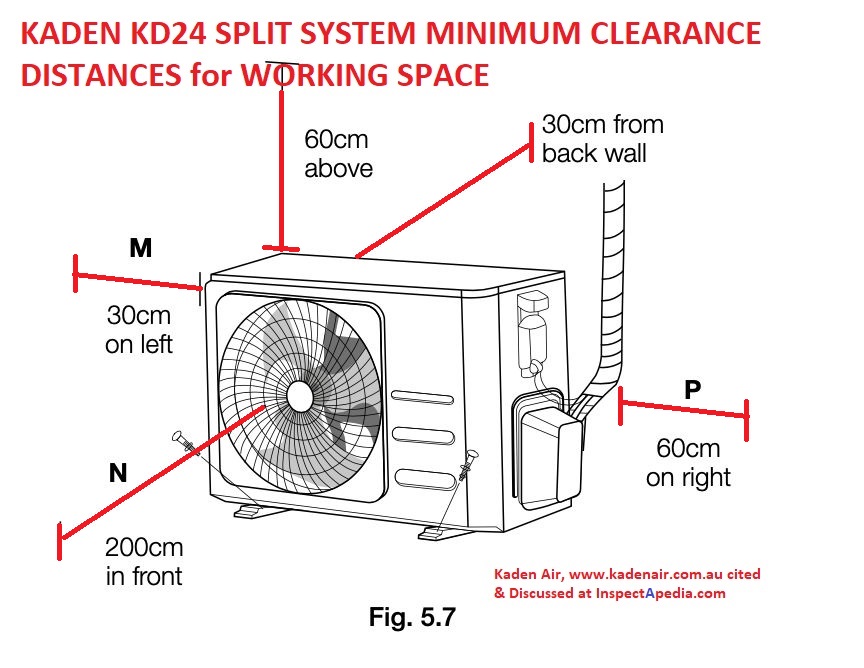
Credit: inspectapedia.com
Frequently Asked Questions
How Much Clearance Is Needed Around An Ac Unit?
Maintain at least 24 inches of clearance around your AC unit. This ensures proper airflow and efficient operation. Trim nearby bushes and remove debris to prevent obstructions. Adequate space also helps in easy maintenance and extending the unit’s lifespan.
How Much Room Do You Need Around An Outside Ac Unit?
You need at least 2-3 feet of clearance around your outside AC unit. This space ensures proper airflow and efficiency.
How Much Space Do You Need Around A Portable Air Conditioner?
Allow at least 20 inches of space around a portable air conditioner for proper airflow and efficient operation. This ensures optimal performance and prevents overheating.
Conclusion
Proper spacing around your air conditioner ensures optimal performance and longevity. Maintain at least 2-3 feet of clearance. This allows for adequate airflow and prevents overheating. Regularly check and clear any obstructions. By following these guidelines, you can enhance efficiency and extend your unit’s lifespan.
Keep your air conditioner running smoothly and efficiently.

